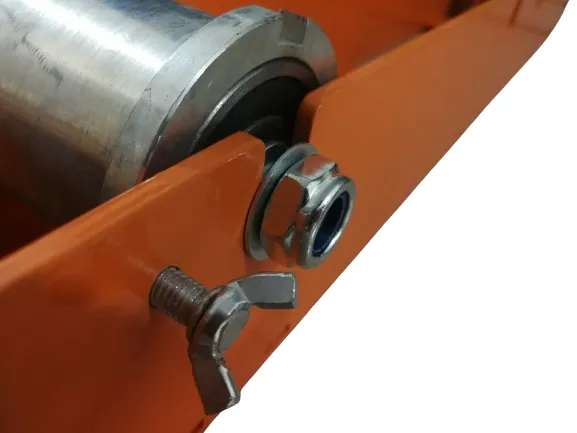
-
 Afrikaans
Afrikaans -
 Albanian
Albanian -
 Amharic
Amharic -
 Arabic
Arabic -
 Armenian
Armenian -
 Azerbaijani
Azerbaijani -
 Basque
Basque -
 Belarusian
Belarusian -
 Bengali
Bengali -
 Bosnian
Bosnian -
 Bulgarian
Bulgarian -
 Catalan
Catalan -
 Cebuano
Cebuano -
 Corsican
Corsican -
 Croatian
Croatian -
 Czech
Czech -
 Danish
Danish -
 Dutch
Dutch -
 English
English -
 Esperanto
Esperanto -
 Estonian
Estonian -
 Finnish
Finnish -
 French
French -
 Frisian
Frisian -
 Galician
Galician -
 Georgian
Georgian -
 German
German -
 Greek
Greek -
 Gujarati
Gujarati -
 Haitian Creole
Haitian Creole -
 hausa
hausa -
 hawaiian
hawaiian -
 Hebrew
Hebrew -
 Hindi
Hindi -
 Miao
Miao -
 Hungarian
Hungarian -
 Icelandic
Icelandic -
 igbo
igbo -
 Indonesian
Indonesian -
 irish
irish -
 Italian
Italian -
 Japanese
Japanese -
 Javanese
Javanese -
 Kannada
Kannada -
 kazakh
kazakh -
 Khmer
Khmer -
 Rwandese
Rwandese -
 Korean
Korean -
 Kurdish
Kurdish -
 Kyrgyz
Kyrgyz -
 Lao
Lao -
 Latin
Latin -
 Latvian
Latvian -
 Lithuanian
Lithuanian -
 Luxembourgish
Luxembourgish -
 Macedonian
Macedonian -
 Malgashi
Malgashi -
 Malay
Malay -
 Malayalam
Malayalam -
 Maltese
Maltese -
 Maori
Maori -
 Marathi
Marathi -
 Mongolian
Mongolian -
 Myanmar
Myanmar -
 Nepali
Nepali -
 Norwegian
Norwegian -
 Norwegian
Norwegian -
 Occitan
Occitan -
 Pashto
Pashto -
 Persian
Persian -
 Polish
Polish -
 Portuguese
Portuguese -
 Punjabi
Punjabi -
 Romanian
Romanian -
 Russian
Russian -
 Samoan
Samoan -
 Scottish Gaelic
Scottish Gaelic -
 Serbian
Serbian -
 Sesotho
Sesotho -
 Shona
Shona -
 Sindhi
Sindhi -
 Sinhala
Sinhala -
 Slovak
Slovak -
 Slovenian
Slovenian -
 Somali
Somali -
 Spanish
Spanish -
 Sundanese
Sundanese -
 Swahili
Swahili -
 Swedish
Swedish -
 Tagalog
Tagalog -
 Tajik
Tajik -
 Tamil
Tamil -
 Tatar
Tatar -
 Telugu
Telugu -
 Thai
Thai -
 Turkish
Turkish -
 Turkmen
Turkmen -
 Ukrainian
Ukrainian -
 Urdu
Urdu -
 Uighur
Uighur -
 Uzbek
Uzbek -
 Vietnamese
Vietnamese -
 Welsh
Welsh -
 Bantu
Bantu -
 Yiddish
Yiddish -
 Yoruba
Yoruba -
 Zulu
Zulu


វិច្ឆិកា . 26, 2024 04:51 Back to list
Understanding the Importance and Installation of Electrical Grounding Rods for Safety
Understanding Electrical Ground Rods Importance and Installation
Electrical ground rods are vital components in the safety and reliability of electrical systems. They serve to discharge excess electricity into the ground, protecting both the electrical installation and the people using it from potentially dangerous electrical surges. Understanding how ground rods function, their importance, and their proper installation can help you ensure a safe and compliant electrical system.
What is an Electrical Ground Rod?
An electrical ground rod is a metal rod, typically made of copper or galvanized steel, that is driven into the ground. Its primary purpose is to create a low-resistance path to the earth, allowing electrical ground currents to disperse safely. This is especially important during lightning strikes, power surges, or equipment malfunctions, which can generate high-voltage scenarios. The ground rod helps in preventing equipment damage and reduces the risk of electrical shock or fire hazards.
Importance of Ground Rods
1. Safety The primary function of a ground rod is to ensure the safety of electrical systems. By providing a safe discharge route for fault currents, ground rods minimize the risk of electric shock to individuals and reduce fire hazards.
2. Surge Protection Ground rods are essential in dissipating electrical surges caused by lightning strikes or other sudden spikes in electrical flow. This prevents damage to sensitive electronic equipment and maintains the integrity of the electrical system.
3. Regulatory Compliance Electrical codes and regulations, such as the National Electrical Code (NEC) in the United States, mandate the installation of ground rods in many situations. Compliance not only ensures safety but also protects homeowners and businesses from liability in case of an electrical fault.
4. Equipment Longevity Proper grounding systems, including ground rods, help prolong the life of electrical equipment. By preventing electrical surges and irregularities, they ensure that devices operate within their intended specifications.
electrical ground rod

Installation of Ground Rods
Proper installation of a ground rod is crucial for its effectiveness. Here are the basic steps to follow during the installation process
1. Select the Right Rod Choose a ground rod that meets local building codes and is appropriate for your specific installation. Common lengths range from 8 to 10 feet, with a diameter of 5/8 inch.
2. Determine the Placement Ideally, the ground rod should be installed in an area that is accessible and free of obstructions such as large trees, structures, or rocks. It should also be positioned away from any water sources to avoid corrosion.
3. Drive the Rod Using a hammer or a ground rod driver, drive the rod vertically into the ground. Ensure that at least 8 feet of the rod is buried, with the top of the rod flush with or below the ground level.
4. Connect to the Electrical System Attach a grounding wire from the ground rod to the main electrical panel. The connection should be secure and use appropriate connectors that are resistant to corrosion. It is essential to ensure that the wire gauge is sufficient to handle potential fault currents.
5. Test the Ground After installation, it’s important to test the resistance of the grounding system using a ground resistance tester. Values below 25 ohms are typically considered acceptable, though this may vary depending on local codes.
Conclusion
Electrical ground rods are indispensable for the safety and reliability of electrical systems. They protect users from electrical surges and malfunctions while ensuring compliance with electrical codes. Proper installation is key to their effectiveness, requiring attention to detail and adherence to regulation standards. For those seeking to ensure the safety of their electrical installations, a well-implemented ground rod system is a fundamental step in safeguarding against the unpredictable nature of electricity. By understanding the importance and methodology of electrical ground rods, homeowners and professionals alike can contribute to a safer electrical environment.
Latest news
duct-rodders-and-conduit-rod-tools
NewsAug.22,2025
ratchet-pullers-and-wire-tightening-tools
NewsAug.22,2025
chain-ratchet-pullers-and-hoist-solutions
NewsAug.22,2025
telescopic-hot-stick-for-electrical-and-high-voltage-use
NewsAug.22,2025
cable-clamp-and-insulated-cable-clamp-systems
NewsAug.22,2025
duct-rodder-conduit-rodder-and-cable-solutions
NewsAug.22,2025








